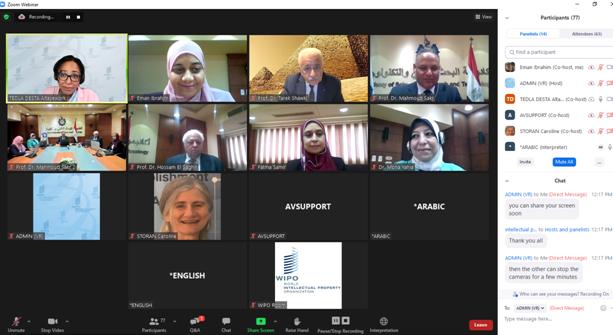The Minister of Education participates in the launch of the Arabic version of intellectual property education for young people and teachers

Dr. Tarek Shawky, Minister of Education and Technical Education, participated in the inauguration of the launch of the intellectual property program for young people and teachers for Egypt and the Arab world, in the presence of Dr. Mahmoud Saqr, President of the Academy of Scientific Research and Technology, and Mr. Darren Tang, Director General of the World Intellectual Property Organization.
This version of the Intellectual Property Program for Young Youth and Teachers was designed for Egypt and the Arab world within the framework of cooperation between the National Academy of Intellectual Property at the Academy of Scientific Research and Technology in Egypt and the Academy of the World Intellectual Property Organization, in order to contribute to teaching the concepts of creativity and innovation related to intellectual property to young youth in Egypt and the Arab region.
Dr. Tariq Shawky stressed that teaching intellectual property to children, young people, and school students today has become of great importance, provided that this is done using educational and educational tools and materials that are appropriate for their age stages and interests, especially in light of the successive technological developments in our time, pointing out To the main and supreme objective of intellectual property education is to maximize its use to achieve comprehensive and sustainable development in society by contributing to the preparation of a creative and innovative generation capable of producing intellectual property and employing it optimally to meet all the needs of society and its development in all fields.
The Intellectual Property Program for Young Youth and Educators consists of two main components, the first of which is “Intellectual Property for Young Youth”, which takes young people on a fun and interactive educational journey in which participants learn about three creative areas, namely copyright, patents and trademarks, and the second is a toolkit Intellectual Property for Educators, which provides educators with a range of customizable educational resources that they can use to create and deliver engaging lessons and educational activities on innovation, creativity and intellectual property.
The "Innovation, Creativity and Intellectual Property for Young Youth and Educators" program contributes to introducing young people in the Arab region to intellectual property, and was designed to initiate dialogue between teachers and educators at the national and regional levels on the importance of intellectual property education for young people from early ages, with the aim of creating Positive social impact and economic value creation from the results of their innovations and creativity.
It is worth noting that the process of customizing the program was not limited to simply translating the content into Arabic, but that a new program was developed in Arabic, where the translated texts were reviewed and many amendments were made to them, which included characters and some events in addition to examples and case studies from Egypt and the Arab world.
For example, in the first component “Intellectual property of young people”, in addition to the international examples already used in the original version, examples from Egypt and Arab countries for example (names of writers, inventors and trademarks) were also used, in the second component “Intellectual property of teachers” A group of Egyptian and Arab examples and case studies were presented, including the success stories of the writer Naguib Mahfouz and the scientist Ahmed Zewail, as well as many examples of brands from almost all Arab countries (for banks, airlines, food products, industries ... etc.).
Intellectual property systems are among the most important means that can be effectively utilized in encouraging innovation, supporting research and development activities in various fields, and enhancing the ability of local products and services to compete in the global market.
In order to make optimal use of intellectual property systems, it is necessary to build capacities of all segments of society and of different age groups to use them effectively and efficiently in order to achieve social and economic development.
